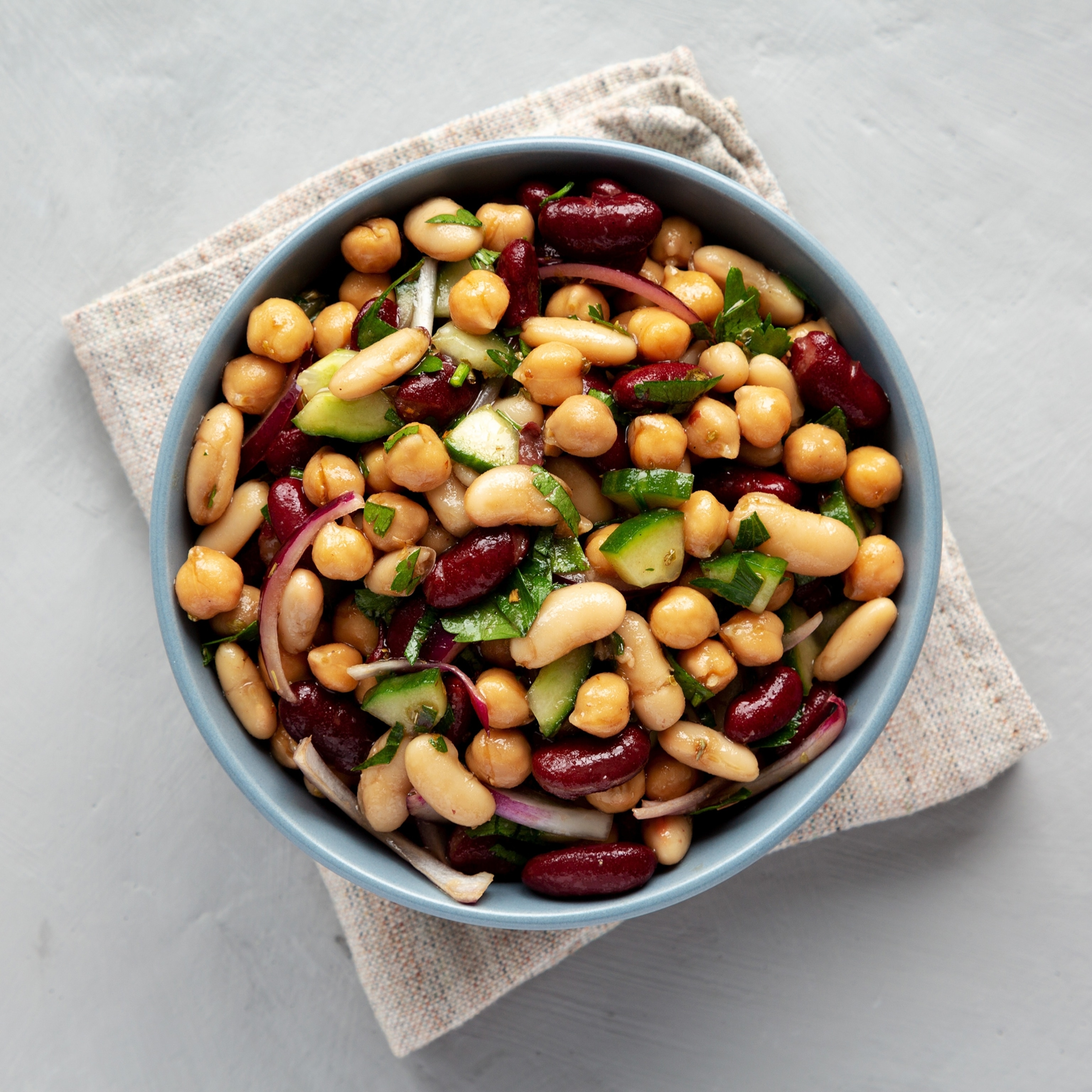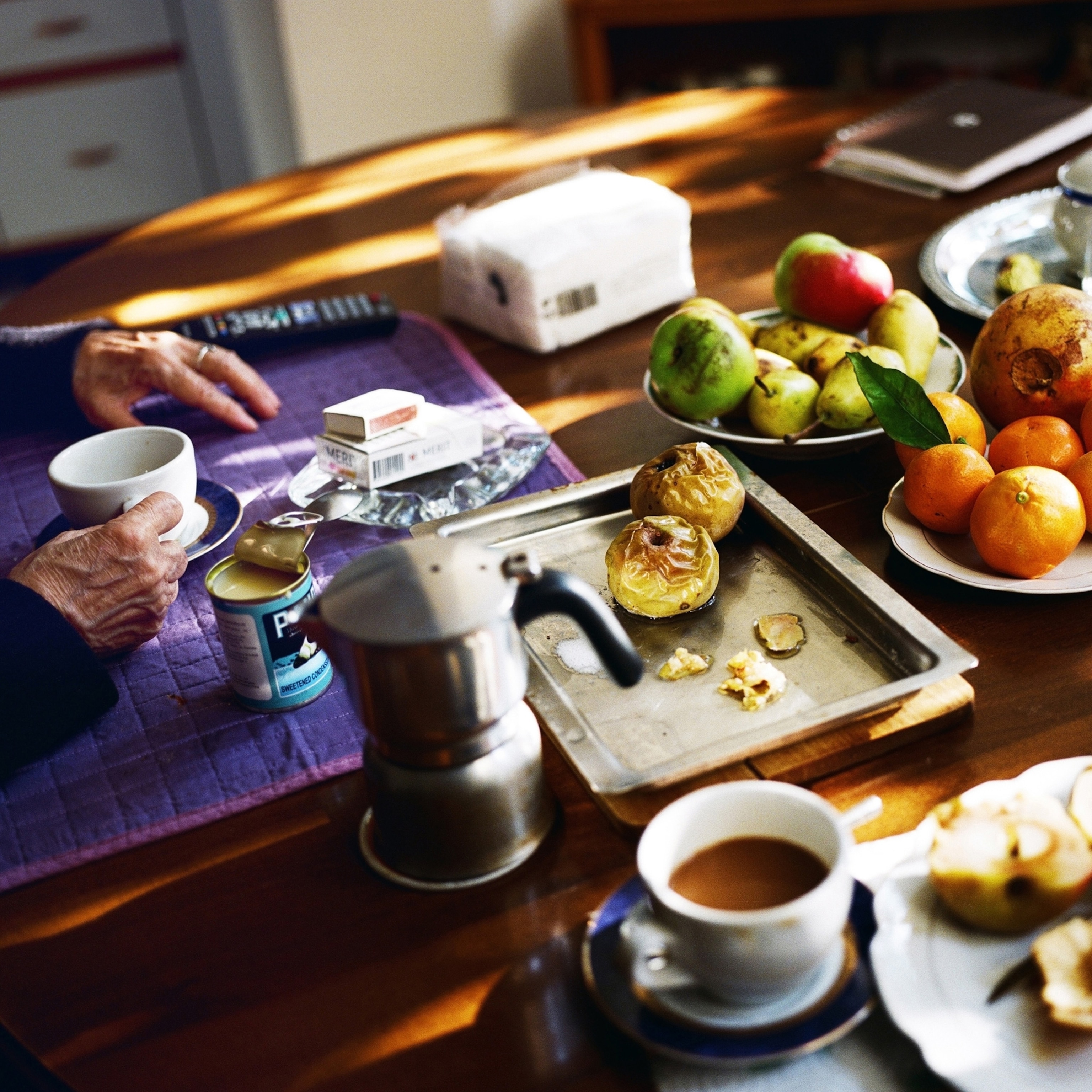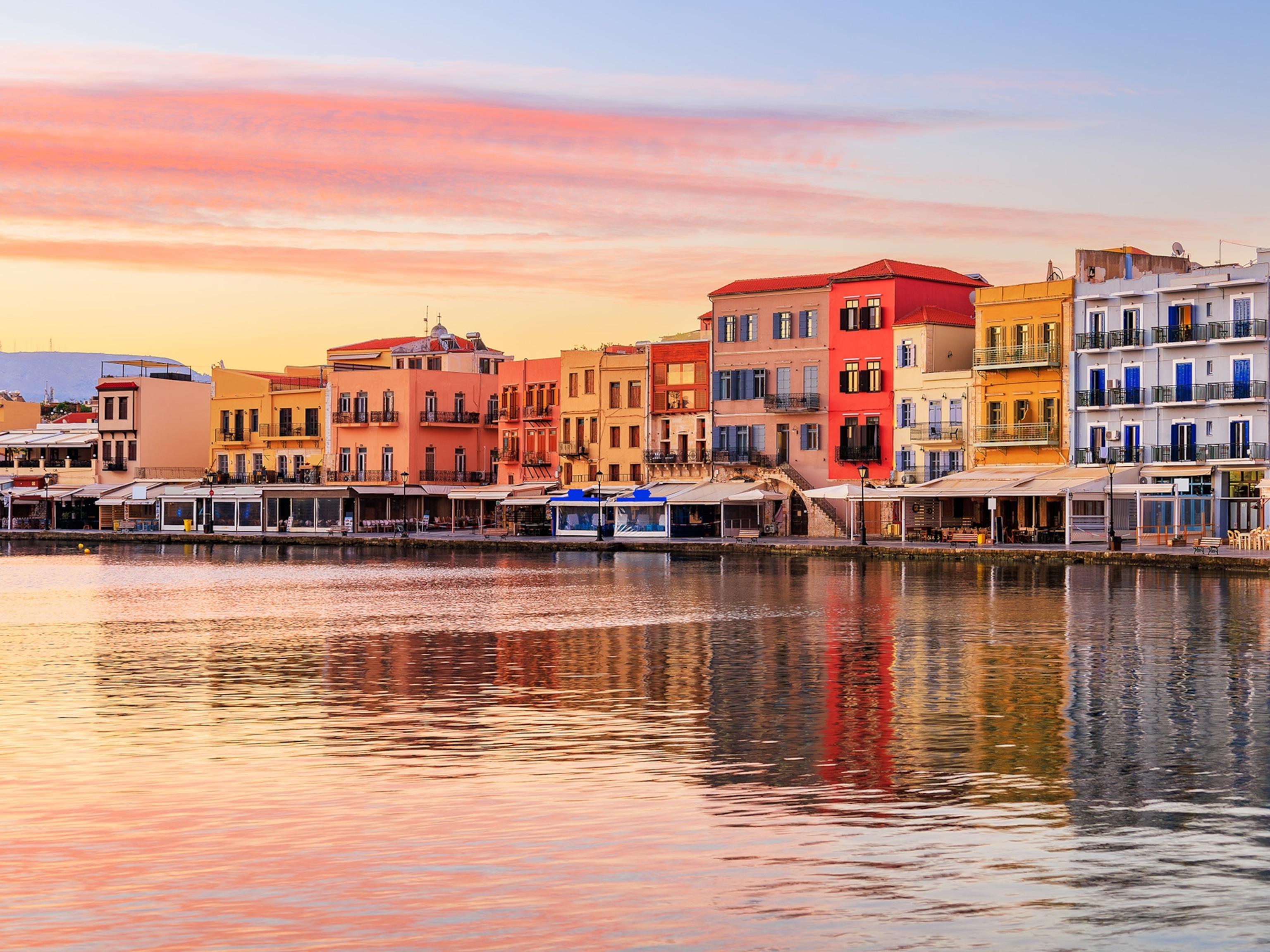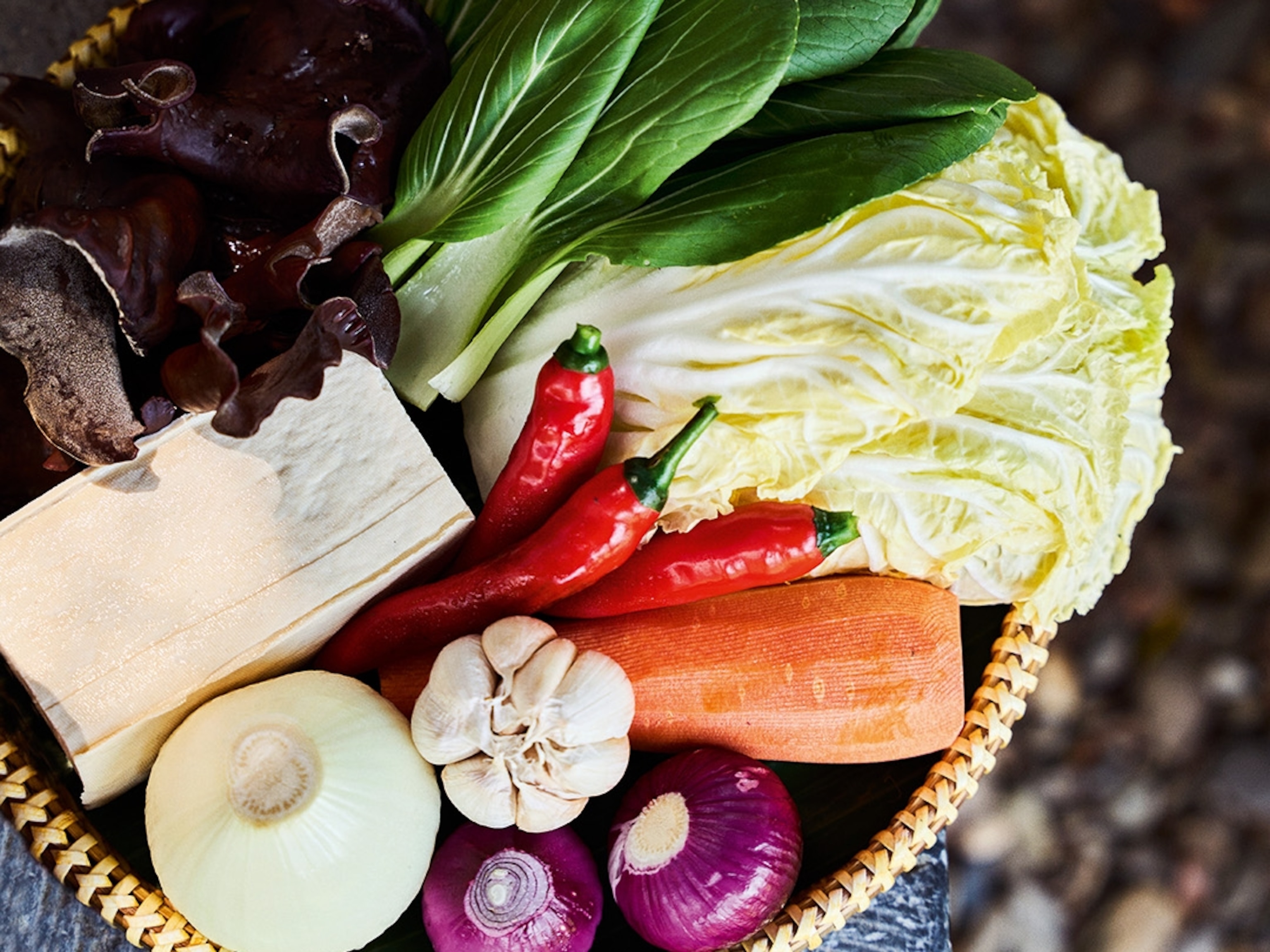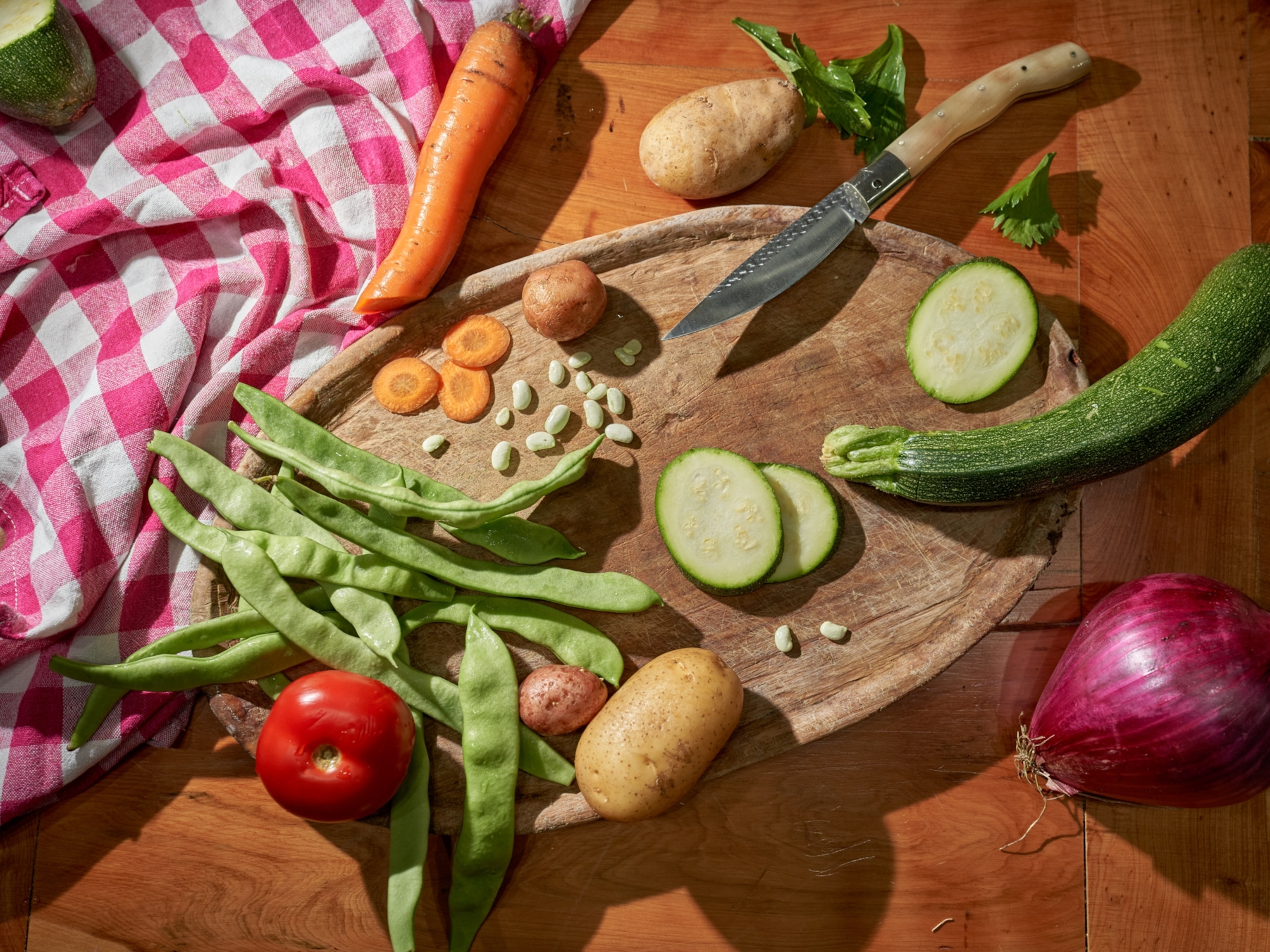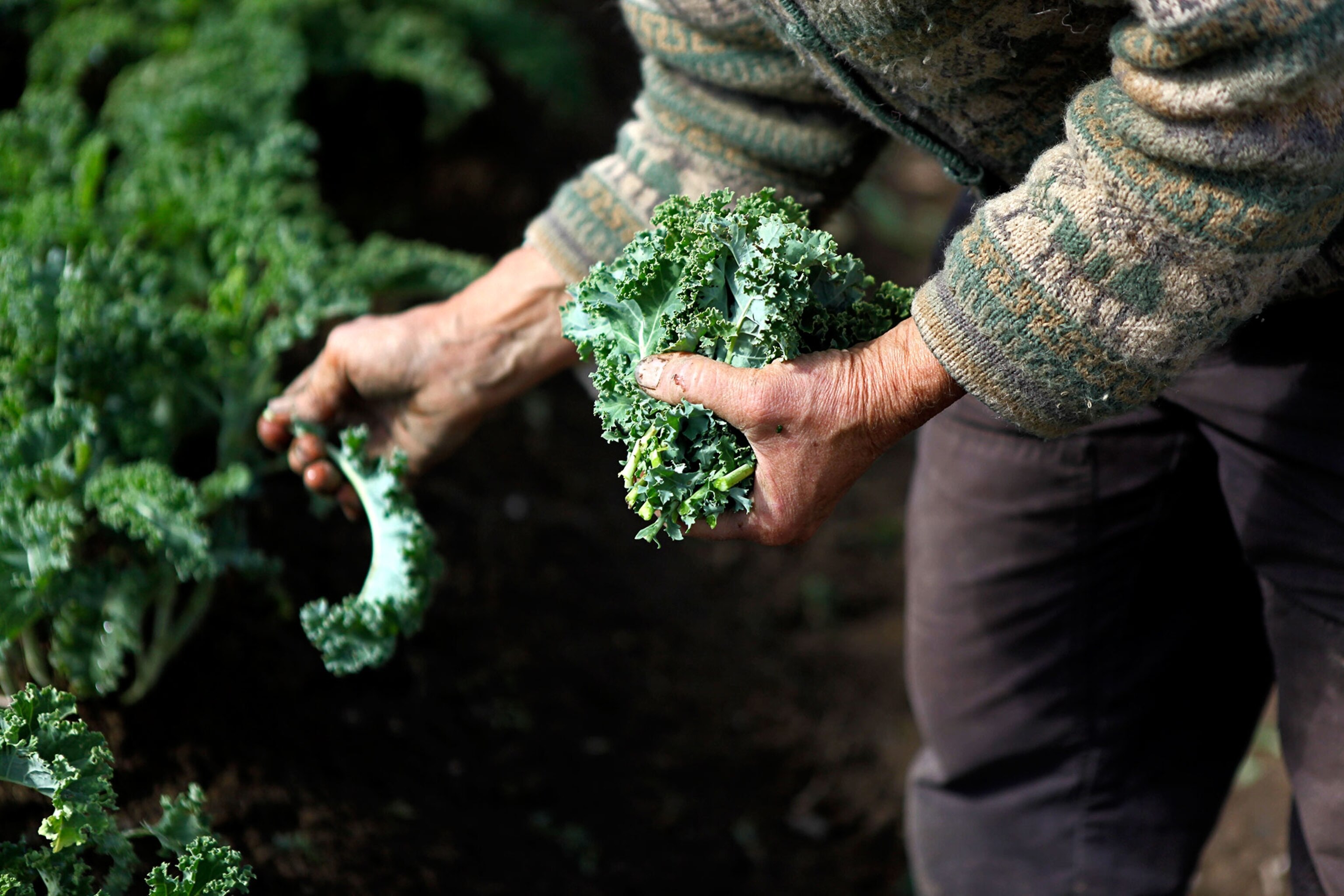
Who Owns Kale?
It's not clear if a New York marketer or Vermont farmers should get credit, but these leaves have dominated the greens scene for years.
It’s hard to pinpoint exactly when kale hit the big time. Was it when Ellen DeGeneres and Gwyneth Paltrow made kale chips in 2011? Was it when Beyonce wore her “KALE” sweatshirt in a 2014 video? Was it when Kale became a hot baby name last year?
Kale is the “it” green, over all things lettuce, collard, and calloo. It even has its own hashtag: #kaleyeah! But why?
“This story is really simple,” Ken Albala, director of food studies at the University of the Pacific, says by email. “One woman said, ‘I’ll get everyone to eat kale,’... it was all a marketing ploy. You can say the same for some foods in the past, like spinach and Popeye—even with tea four centuries ago, and sugar before that.”
Who is the woman behind Big Kale? The story goes that the American Kale Association hired Oberon Sinclair, who runs the boutique PR firm My Young Auntie (clients include luxury brands Givenchy and Hermes), to make kale cool. Paper magazine dubbed her the “queen of kale”, while The Independent fawned over how she was behind kale’s rise.
But as it turns out, it’s not so simple. A largely overlooked article in mindbodygreen reveals that Sinclair actually invented the American Kale Association, with its sleek website and nearly 15,000 followers on Twitter.
Kale may also owe its popularity, at least in part, to Chick-fil-A.
"It's my proudest campaign ever," she told mindbodygreen last December. "I've been trying to convert people for years to eat in a healthy way. I've always loved [kale]. It is an amazing vegetable."
That raises more questions: Did she make any money off the campaign? How much did it cost? Was she worried that people would feel misled? Did she orchestrate all the rave celebrity reviews of kale?
Sinclair’s PR coordinator asked me to forward my questions via email. Twelve minutes later, I got a response: “Oberon has been asked to do an exclusive so unfortunately can not commit to your story.”
Still curious, I took a deeper look. The “American Kale Association” website appears to have been created in February 2014, two years after Sinclair was reportedly hired by the American Kale Association. A Facebook page and Twitter account followed in March 2014. That same month, The Sunday Times lauded her as the “PR whizz behind kale’s success.” Even by Madison Avenue standards, that was fast.
Some kale advocates take a dim view of the publicity stunt and say kale’s popularity has been a long time coming, steadily rising since 2004 and peaking in 2014 but holding fairly steady since, according to Google trends.
“[Sinclair] was taking credit for a movement that belongs to the people,” says Drew Ramsey, the author of “50 Shades of Kale” and one of the founders of National Kale Day. The nonprofit has helped serve kale in 2,500 schools and this year has collaborated with the U.S. Defense Department to serve kale at 240 military commissaries on National Kale Day this October.
There were plenty of people involved in making kale popular, he says, mostly those who played a part in the resurgence of the local food movement and working at a grassroots level. And the fact that it’s been embraced by the paleo and vegan diet trends doesn’t hurt either.
“The kale story begins with a folk hero, not a New York City PR team,” Ramsey says.
That folk hero—or really heroes—developed the original kale guerilla marketing campaign, one that developed organically, if you will, 15 years ago at a small farmers’ market in Vermont.
Paul Betz of High Ledge Farm was saddled with too much kale. So he asked Bo Muller-Moore, who’d recently started screenprinting, to make him a shirt with the slogan “Eat More Kale.” The phrase had good meter, it was simple, wasn’t exclusive. It was whimsical and fun.
His plan was to have his two-year-old daughter wear an “Eat More Kale” shirt. If anything could sell kale, it would be a clever slogan and a cute toddler.
It worked—sort of. People wanted to buy “Eat More Kale” shirts, but it didn’t help that much with his kale surplus, Betz said.
Still, over the years, he’s seen his “Eat More Kale” shirt pop up all over the country, in Washington, Tennessee, Kentucky, Georgia.
But Betz wouldn’t take credit for making kale popular.
“I’ve thought about it once in awhile, but I don’t know,” he said, adding that it was really the surge in interest in small and medium scale farming and the community supported agriculture movement exposed people to new kinds of vegetables.
“The rise of kale really mirrors the new renaissance of farmers’ markets,” he said. And eventually, around 2011, kale got so popular that the seed distribution company he works for part-time had to start getting new varieties from Europe.
Kale may also owe its popularity, at least in part, to Chick-fil-A. After making the shirts for Betz, Muller-Moore kept on churning out “Eat More Kale” shirts. In 2011, Chick-fil-A sued Muller-Moore - “Eat More Kale,” Chick-fil-A said, was too similar to their slogan: “Eat Mor Chikin.”
The dispute made headlines and Muller-Moore refused to back down. People from all over the world sided with the little guy. That year, Muller-Moore sold $1 million worth of “Eat More Kale” shirts. For the record, Chick-fil-A seems to have jumped on the kale bandwagon too—they now serve a kale salad.
Since 2004, Muller-Moore has also been handing out 75,000 “Eat More Kale” bumper stickers per year as a sort of “sticky business card.” That’s 900,000 stickers by the end of this year.
“That’s a lot of guerilla marketing… [that] has to get at least a little credit for kale’s rise to the top. That’s one hell of an advertising campaign that no farmer had to pay for,” Muller-Moore said.
For the record, I asked both Muller-Moore and Betz about the role of the American Kale Association. They had never heard of it.
Rebekah Kebede is a journalist based in Kingston, Jamaica where she has written for Reuters, Quartz, and GOOD magazine, among others. Prior to moving to the Caribbean, she was a correspondent for Reuters in Perth, Australia and New York City. Her favorite kale variety is lacinato or Tuscan kale. Find her on Twitter.

